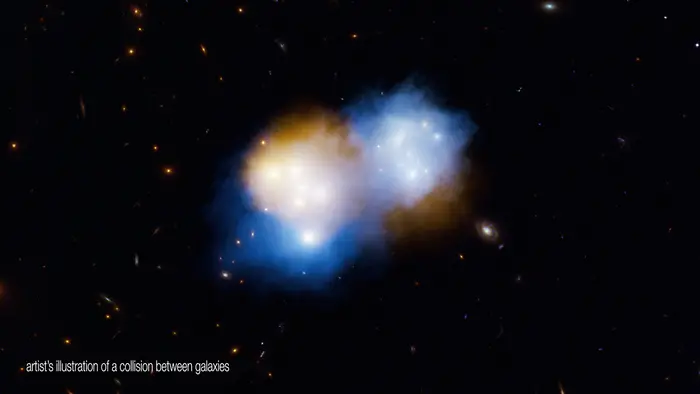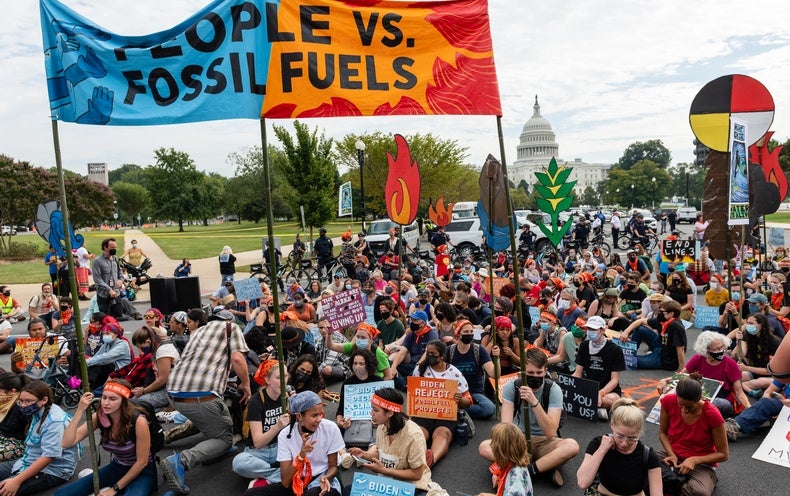Every spring I bring my students to the desert of northwestern New Mexico, just north of Chaco Canyon, where the ancestral Pueblo people built a great city out of rocks a millennium ago. As we hike across the pastel-striped badlands, we can’t help but tread on dinosaur bones. The ground is littered with busted Tyrannosaurus rex limbs and chunks of vertebrae that anchored the lofty necks of sauropods some 66.9 million years ago during the Cretaceous period. And then, suddenly, the bones disappear.
As we continue walking up through the rock layers, we begin to notice a new type of fossil. Jaws filled with teeth. Not the steak knives of T. rex, but teeth with complex cusps and valleys. They are the molars of mammals. On one trip, in 2014, I followed their trail into a dry creek bed sacred to the Navajo called Kimbeto—the “sparrowhawk spring.” From the other end of the wash, I heard a victory yelp. My colleague Tom Williamson had found a skeleton—one belonging to a big animal, weighing around 100 kilograms. We could tell from its pelvis that it gave birth to live, well-developed young. It was a placental mammal, like us.
This fossil mammal, Ectoconus, was a revolutionary. It lived a mere 380,000 years after the worst day in Earth history, when a six-mile-wide asteroid ended the Age of Dinosaurs in fire and fury, ushering in a new world. Textbooks often tell a simple tale: the dinosaurs died, but mammals survived and quickly took over. Yet this account has glossed over a troubling reality: we actually know very little about the mammals that endured the extinction and persevered during the next 10 million years, during the Paleocene epoch. How were they able to persist when 75 percent of species died, and how did they set the foundation for the more than 6,000 species of placental mammals that thrive today, from the aerial bats to the aquatic whales to humans?
Scientists have debated these questions since the 1870s, when the first fossils of Paleocene placental mammals emerged in New Mexico. Finally, over the past two decades, new discoveries and research techniques have unmasked these placental pioneers. They nearly went the way of the dinosaurs, but after barely surviving the brimstone, they rapidly inflated their bodies from rat-sized to cow-sized, diversified their diets and behaviors—and eventually expanded their brains—and rang in a new Age of Mammals.
Triassic Origins
Rewind back to the Triassic period. People often assume that mammals followed dinosaurs in the evolutionary past, but in fact, both groups trace their origins to the same time and place: around 225 million years ago, when all of Earth’s land was gathered into the supercontinent Pangea. At this time, the planet was recovering from the worst mass extinction in history, when mega volcanoes in Siberia spewed lava and carbon dioxide for millions of years, causing a global heat spike that killed up to 95 percent of all species. After the volcanoes shut off, dinosaurs, mammals, and many other new groups arose to fill the vacuum.
For the next 160 million years dinosaurs and mammals went their own separate ways, but both were successful. Dinosaurs became giants and excluded mammals from large-bodied niches. Mammals did the opposite: with their small body sizes, they could exploit ecological niches that the bigger dinosaurs couldn’t access. Having attained a competitive edge in those habitats, they effectively prevented T. rex, Triceratops and kin from becoming small. Between 201 million and 66 million years ago, during the Jurassic and Cretaceous periods, a bounty of pint-sized mammals—none larger than a badger—lived underfoot of the dinosaurs. Among them were scurriers, climbers, diggers, swimmers and gliders. It was these animals that developed the classic mammalian blueprint: hair, warm-blooded metabolism, a complex lineup of teeth (canines, incisors, premolars, molars), and the ability to feed their babies milk.
These early mammals grew into a verdant family tree. There were dozens of subfamilies distinguished by different types of teeth, diets and reproductive styles. One such group—the multituberculates—flourished in the Cretaceous underworld, using their saw-blade premolars and gnawing incisors to devour a new type of food: fruits and flowers. Scores of their fossils came to light during the 1963–1971 Polish-Mongolian expeditions to the Gobi Desert, one of the first major female-led paleontological fieldwork projects, captained by one of my heroes, the late Polish paleobiologist Zofia Kielan-Jaworowska.
Meanwhile, as multituberculates prospered, three other groups quietly branched off on their own. These trailblazers gave rise to the three mammal lineages that persist today: the egg-laying monotremes; the marsupials, which give birth to feeble young that develop further in a pouch; and the placentals, like Ectoconus and us, which birth larger young. The molecular clock—a technique that uses DNA differences among modern species and back calculates to estimate when they diverged—predicts that some placental lineages, including primates, lived alongside the dinosaurs. Although paleontologists are desperate to recover fossils of such early placentals, they have yet to be found.
Then one day 66 million years ago this primeval tableau—of dinosaurs thundering across the land and mammals scampering in the shadows—ended in chaos. An asteroid the size of Mount Everest was hurtling through the heavens, traveling faster than a jet airliner. By chance, it smashed into what is now the Yucatán Peninsula of Mexico, striking with the force of more than a billion nuclear bombs, and punched a hole in Earth’s crust more than 10 miles (16 kilometers) deep and more than 100 miles (160 kilometers) wide. Tsunamis, wildfires, earthquakes and volcanic eruptions raged around the planet. Dust and soot clogged the atmosphere, turning the world dark for years. Plants couldn’t photosynthesize, forests collapsed, herbivores died, carnivores followed. Ecosystems crumbled. It was the end of the Age of Dinosaurs.
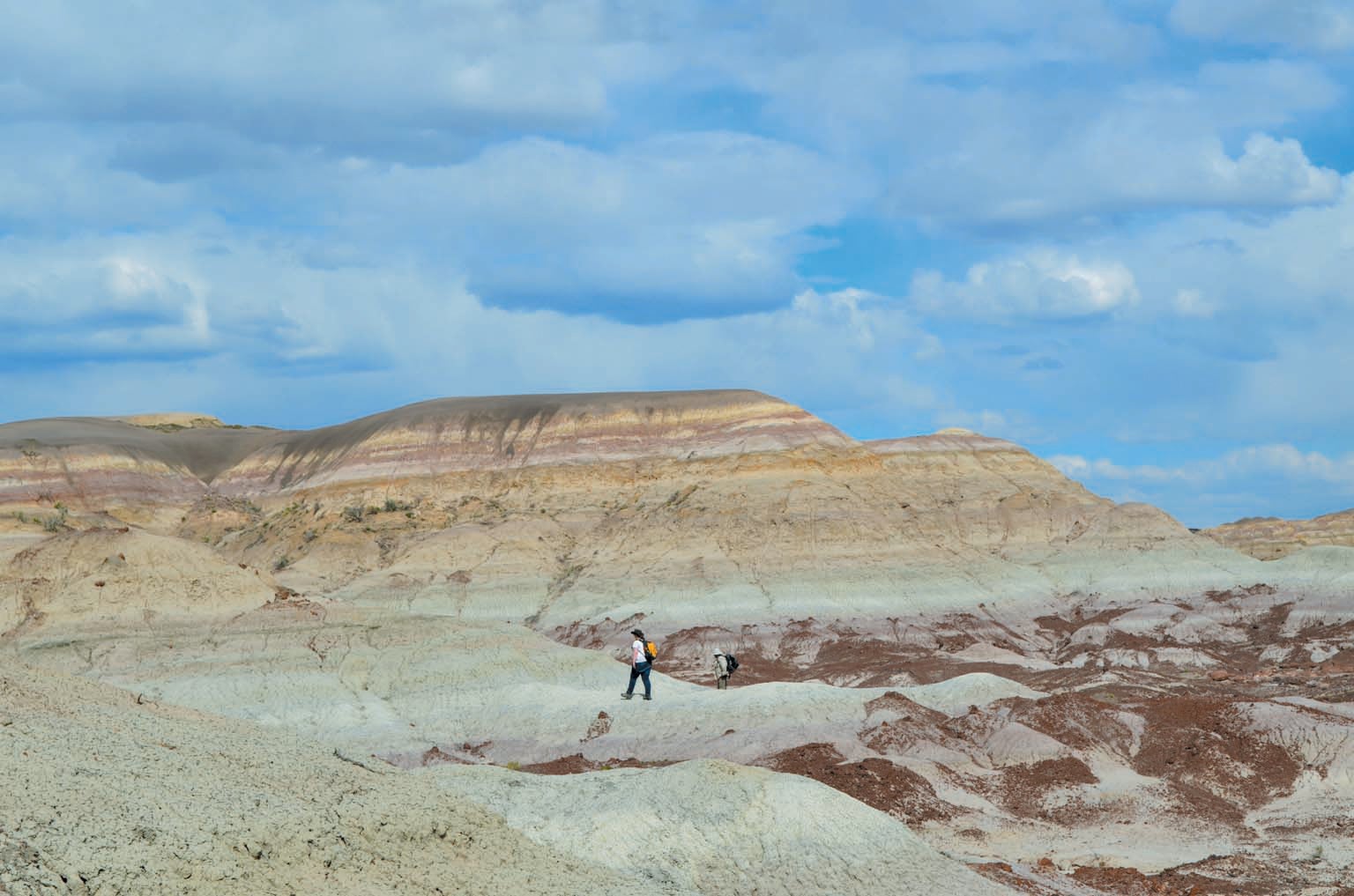
A Close Call
The asteroid was apocalyptic, and it changed the course of Earth’s history. Unable to cope, three out of every four species succumbed to extinction. Dinosaurs were the most famous victims: all the long-necked, horned, duck-billed, dome-headed and sharp-toothed ones died, with only a handful of birds carrying on the dinosaur legacy to the present day.
And what about mammals? In most tellings of the end-Cretaceous extinction, they are heralded as the great survivors, the winners who seized the crown from the dinosaurs. In a sense, this is true—mammals did persevere, or else we would not be here. But new research shows that it was a close call, and their fate hinged on what happened in the days, decades and millennia after the asteroid impact. For mammals, the asteroid was both their moment of greatest peril and their big break.
The best record of those mammals that faced the asteroid and its aftermath comes from the northern Great Plains of the U.S. For nearly half a century William Clemens of the University of California, Berkeley, who passed away in 2020, explored the sagebrush-scented ranchlands of northeastern Montana. Sculpting these hills are rocks formed by rivers that drained the ancestral Rocky Mountains and flowed through forests, during a three-million-year stretch spanning the end of the Cretaceous, the fallout from the asteroid and the dawn of the Paleocene. Tens of thousands of fossils from these layers, studied statistically by Clemens’s former student and current University of Washington paleontologist Gregory Wilson Mantilla, reveal what lived, what died and why.
Perhaps surprisingly, mammals were doing well in the latest Cretaceous. At least 30 species lived in Montana back then, filling many ecological roles at the base of the dinosaur-dominated food chain, including bone crunchers, flower eaters, insectivores and omnivores. The vast majority of these creatures were metatherians (early members of the marsupial line) or multituberculates. Early cousins of placentals called eutherians were present, though rare. This situation was stable throughout the final two million years of the Cretaceous. There was no sign of serious trouble.
Then everything changes. Looking at the sedimentary rocks that formed 66 million years ago, we see that a thin line appears, saturated with iridium, an element that is rare on the surface of Earth but common in outer space. This is the chemical fingerprint of the asteroid. Dinosaurs—including T. rex and Triceratops—abruptly disappear. The Cretaceous has given way to the Paleocene.
The earliest Paleocene scene is dire. There is a fossil locality in Montana dated to approximately 25,000 years after the asteroid hit, called the Z-Line Quarry. It reeks of death. Almost all the mammals that flourished in the region in the Cretaceous are gone; only seven species remain. Several other fossil sites divulge what was happening over the next 100,000 to 200,000 years. If you pool together all mammals from this time, there are 23 species. Only one of these is a metatherian; these marsupial ancestors, once so abundant in the Cretaceous, were nearly extinguished. All told, if you consider the entire Montana fossil record, along with other data from across western North America, the statistics are grim. A paltry 7 percent of mammals survived the carnage. Imagine a game of asteroid roulette: a gun, with 10 chambers, nine of which hold a bullet. Even those odds of survival are slightly better than what our ancestors faced in the brave new world of the Paleocene.
This bleak state of affairs raises a question: What allowed some mammals to endure? The answer became apparent when Wilson Mantilla looked at the victims and survivors. The survivors were smaller than most of the Cretaceous mammals, and their teeth indicate they had generalist, omnivorous diets. The victims, on the other hand, were larger, with more specialized carnivorous or herbivorous diets. They were supremely adapted to the latest Cretaceous world, but when the asteroid unleashed disaster, their adaptations became hardships. The smaller generalists, in contrast, were better able to eat whatever was on offer in the postimpact chaos, and they could have more easily hunkered down to wait out the worst of the bedlam.
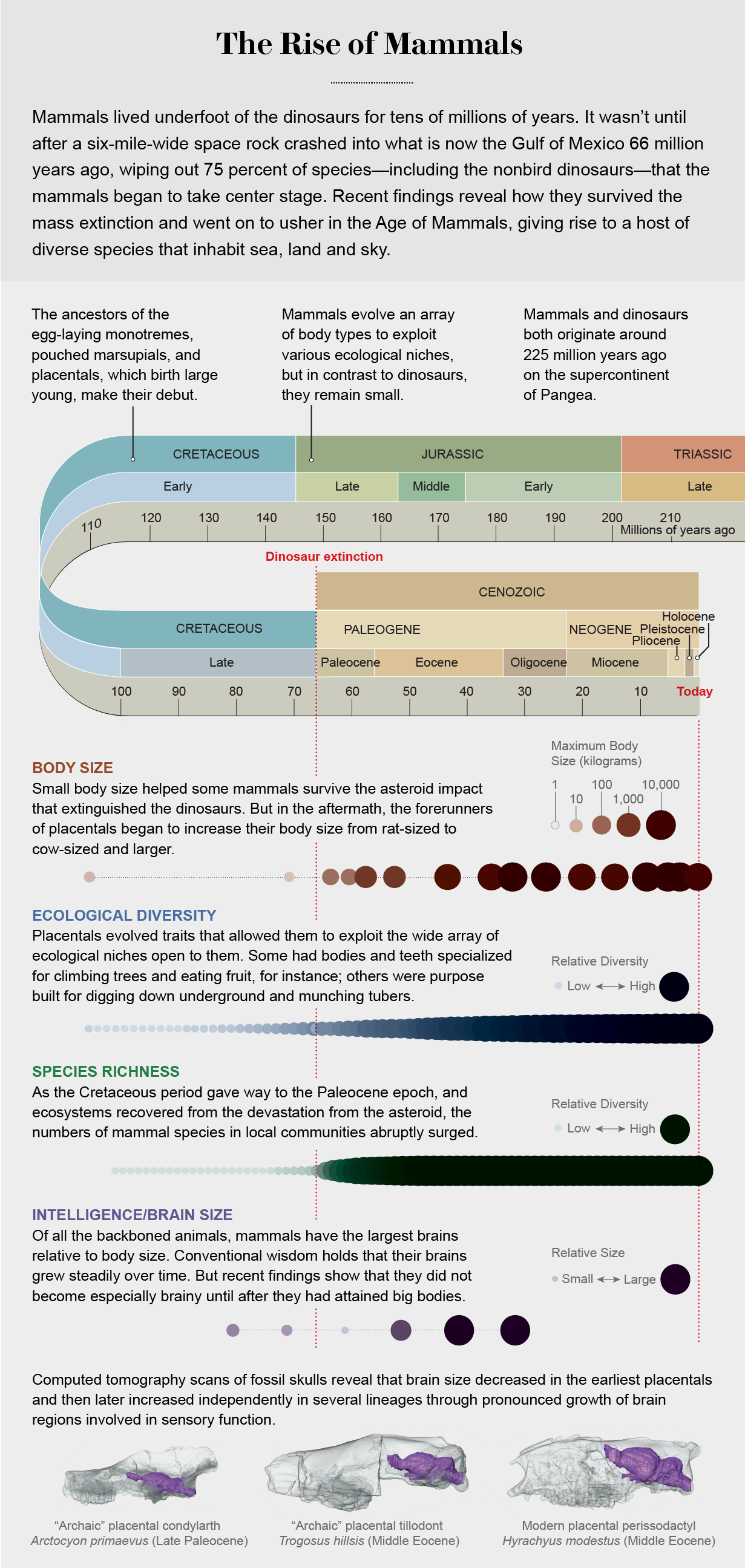
As ecosystems recovered in the earliest Paleocene, many of the mammals that started to multiply were eutherians, the placental antecedents that were once bit players in the Cretaceous. Their tiny bodies, flexible diets, and perhaps faster ways of growing and reproducing allowed them to commandeer open niches and start building new food webs. Around 100,000 years postasteroid a new eutherian appeared in Montana and swiftly became common. Purgatorius, with gentle molar cusps for eating fruits and highly mobile ankles for clinging and climbing in the trees, was an early member of the primate line. It, or perhaps another closely related eutherian, was our ancestor.
The First Placentals
These plucky survivors forged a new world—an Age of Mammals, in which placentals, more than all the others, became ascendant. Some of the best fossils of the first true placentals to form diverse Paleocene communities come from New Mexico, particularly Kimbeto. Ectoconus, whose skeleton we excavated in 2014, was one of these trailblazers. When it was bounding through swampy rain forests and snacking on leaves and beans 65.6 million years ago, it was the largest mammal that had ever lived there. It was one of dozens of new placentals in its environment, already turning dinosaurs into ancient history.
We have known about these Paleocene placentals for nearly 150 years. Their fossils were reported during surveys in the 1870s and 1880s, when geologists joined cartographers and soldiers to chart lands then recently seized from Native Americans. One such explorer, David Baldwin, found a cache of mammals at Kimbeto and other sites of similar age, which were sandwiched between older fossils of Cretaceous dinosaurs and younger mammals from the Eocene epoch, which lasted from 56 million to 34 million years ago, that could readily be classified into familiar groups such as horses, monkeys and rodents. The Paleocene mammals were not so easily categorized, however. They were clearly much larger than any Cretaceous mammals, and they lacked epipubis bones at the front of their pelvis, suggesting they had large placentas to nourish their young in utero. Thus, they were assuredly placentals. But their skeletons seemed peculiar—stocky and muscle-bound, with mashups of features seen in various groups of modern-day mammals.
These Paleocene oddballs garnered a troublesome reputation, and scholars began to dismiss them as “archaic” placentals. What were their relationships with their Cretaceous forebears and modern-day mammals, and how did they move, eat and grow? These questions flummoxed paleontologists for generations. Enter Thomas Williamson, curator at the New Mexico Museum of Natural History and Science. For more than a quarter of a century, he has scoured the badlands, training his twin sons, Ryan and Taylor, and many local Navajo students to become ace fossil collectors. Over the last decade my students and I have joined Tom’s team.
Tom and his crew have collected thousands of fossils, which paint a vivid picture of Paleocene life within the first million years of the asteroid. Among the roster of archaic placentals are animals like Ectoconus, which are shoehorned into a nebulous group called condylarths. Members of this group were mainly plant eaters or omnivores with sturdy builds; many of them had hooves. They shared the herbivore niches with pantodonts—barrel-chested leaf gobblers with enormous hands and feet, which achieved sizes comparable to modern cows. Another group, the taeniodonts, were gargoyle-esque diggers, which used their huge clawed forearms to tear through dirt and their massive jaws and enlarged canines to root out tubers. All these mammals would have feared the triisodontids, the terrors of the Paleocene, which looked like wolves on steroids and smashed the bones of their prey with crushing molars.
Untangling the genealogical relationships of these archaic placentals is challenging. My research group is currently working with Williamson, Carnegie Museum of Natural History mammalogist John Wible and other colleagues on this Gordian knot of phylogeny. We are building a vast data set of fossil and extant mammals, and their anatomical and genetic features, so that we can construct a master family tree. Our preliminary results are encouraging. Some of the archaic species, such as taeniodonts, might have stemmed from Cretaceous eutherian ancestors and thus would be among the most primitive placentals on the trunk of the family tree. Others, including some of the condylarths, share features with today’s hoofed mammals and are probably proto-horses and proto-cattle. The archaic placentals, therefore, seem to be a diverse menagerie, some of which formed their own idiosyncratic subgroups and others the ancestral stock from which today’s placentals arose.
A Head Start
Although the precise locations of condylarths and taeniodonts and their archaic ilk in the family tree remain to be worked out, we are already grasping what they were like as living, breathing animals. Fossils collected by our team and studied using new technologies reveal how these placentals developed novel features and behaviors, helping them adapt to the early Paleocene mayhem and take advantage of open niches. Many placental trademarks evolved during this time—assets that helped to mold generalist extinction survivors into new and diverse specialists. These traits underpinned the success of placentals over the next 66 million years and are part of the foundation of our own human biology.
Chief among these hallmarks of placental mammals is the capacity to birth well-developed young, which gestate for a prolonged period inside the mother before being born in an advanced state. This arrangement differs markedly from how the other two types of extant mammals reproduce. Monotreme babies hatch from eggs, and marsupials are born so premature that they must shelter in their mother’s pouch for months to complete development. Prolonged gestation allows some placentals to get a head start in life: babies can often start moving, socializing and even procuring their own food shortly after birth.
To figure out how Paleocene archaic placentals grew, Gregory Funston, a postdoctoral scholar working in my laboratory at the University of Edinburgh, cut a variety of their teeth, including the milk teeth of babies, into thin slices that he could examine under a microscope. By counting daily lines of growth and identifying chemically distinctive stress markers in the enamel caused by birth, he could tell that some of these mothers nurtured babies in their wombs for around seven months—more than twice as long as marsupials. This observation confirms the evidence from pelvic anatomy that these Paleocene species really were placentals. More important, this growth strategy unlocked a superpower. Larger offspring could more easily grow into larger adults, which may have enabled the first placentals to rapidly balloon in stature within a few hundred thousand years of the dinosaurs’ demise, after 160 million years of being stuck at tiny sizes.
As the Paleocene placentals grew larger, they diversified in other ways. My former Ph.D. student and current postdoc Sarah Shelley, who has been a key member of our New Mexico field crews, studied the skeletons of archaic species in detail, paying particular attention to how the muscles attached. She performed a statistical analysis of a large data set of measurements, comparing the Paleocene species with their Cretaceous precursors and modern-day descendants. What she found was unexpected: the archaic placental skeletons were highly diverse, and their ankles were capable of many types of locomotion. Their skeletons were indeed stocky and generalized at quick glance, one reason they were long stereotyped as archaic. But their muscular frames were highly adaptable, and different species were able to burrow, trot and climb. These species could also acquire different types of food. Such intense diversification is indicative of what biologists call an adaptive radiation, which occurs when many new species rapidly proliferate from an ancestor, changing aspects of their appearance and behavior to take advantage of new environments or opportunities.
For all their specializations, however, the Paleocene archaic placentals were not especially intelligent. This was the surprising revelation of a study led by Ornella Bertrand, a postdoc in my lab, who is a wizard at using CT scans to digitally reconstruct the brains, ears and other neurosensory structures of extinct species. She scanned several skulls of archaic placentals from New Mexico, along with stunning new fossils recently discovered near Denver by Tyler Lyson and Ian Miller and their team. Compared with their minuscule Cretaceous predecessors, the Paleocene mammals did have larger brains in terms of absolute size. Yet as lab and field studies of modern mammals show, it is relative brain size—the ratio of brain volume to body mass—that truly matters. The relative brain sizes of the archaic placentals were laughably small compared with not only those of today’s mammals but even those of the Cretaceous species living with the dinosaurs.
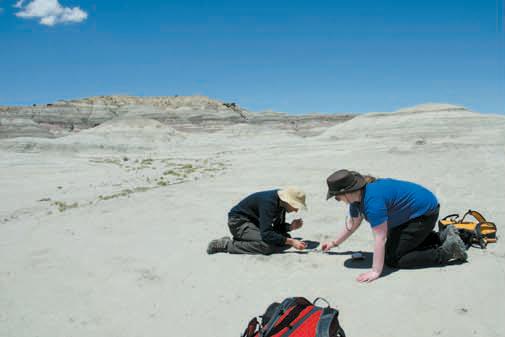
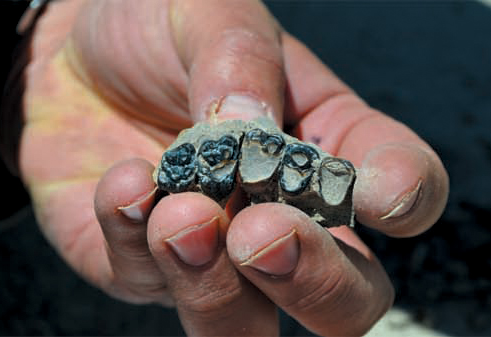
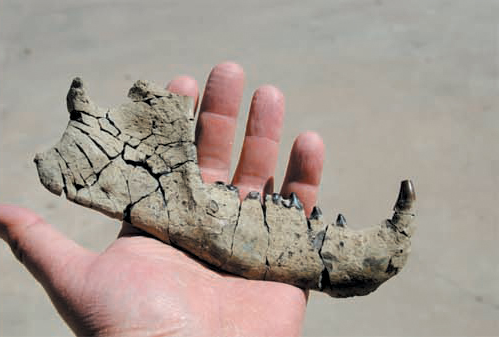
The first placentals, it seems, got so big so fast that their brains couldn’t initially keep pace. This finding counters a long-standing convention that mammal brains got progressively larger over time, in both absolute and relative size. It also, perhaps, defies expectations: Shouldn’t the mammals that founded the placental dynasty have used their wits to navigate the obstacle course of postasteroid survival? Apparently not. Growing bigger bodies was more important than growing bigger brains, at least at first, when there were so many vacant niches to fill. In such a fickle world of abundant opportunity, large brains may have even been detrimental because of their higher energetic costs.
Eventually, as ecosystems stabilized and competition among the many new placentals increased, their brains expanded. Much of the growth was in the neocortex, a sublime region of the cerebrum involved in higher cognition and sensory integration. But this burgeoning would have to wait until the next time interval after the Paleocene: the Eocene, when the archaic placentals slowly declined and the modern placental groups—including horses, bats and whales—took over the planet.
The Modern World
The Paleocene was a greenhouse world; the New Mexican mammals frolicked in jungles, and crocodiles basked in the high-latitude sun. Then, about 56 million years ago, the greenhouse got even hotter. Magma began to pool under the northern continents and migrated upward as a plume. As it percolated through the crust, it baked the rocks of the deep Earth. Like an engine burning gasoline, this activity released carbon dioxide—trillions of tons of it, which warmed the atmosphere between five and eight degrees Celsius within, at most, 200,000 years. Earth has not been hotter since.
This sudden global warming event, called the Paleocene-Eocene Thermal Maximum, was yet another hurdle that mammals had to overcome. But this time, unlike the asteroid 10 million years earlier, very few mammal species were extinguished. Instead they went on the move, following new high-latitude migration corridors that opened as temperatures warmed. Some of the migrants boasted new adaptations, notably much larger brains. They debuted other new traits, too: primates evolved nails on their fingers and toes to grip branches, even-toed artiodactyls developed pulley-shaped ankles that facilitated fast running, and odd-toed perissodactyls acquired big hooves that made them champion gallopers. These more modern-style mammals swarmed across the interlinked continents of North America, Europe and Asia, and their mass migration overwhelmed the archaic placentals. Condylarths, taeniodonts, pantodonts and triisodontids would survive only a little longer.
South of the equator, where Cretaceous and Paleocene mammal fossils are much rarer, the story was different. Both Africa and South America were island continents, which incubated their own unusual placentals in isolation: elephants and kin in Africa; sloths and armadillos in South America. It was also down south where the other two mammal lines managed to hold on. Monotremes, such as the platypus and echidna, took refuge in Australia and New Guinea, where a scant five species remain today. Marsupials were wiped out on the northern continents but won a reprieve by immigrating to South America and then hopping across Antarctica to Australia, where they diversified into kangaroos and koalas. (One group later returned to North America as immigrants: opossums.)
But the future mostly belonged to the placentals. Before long, as the warming spike abated, some were swinging from trees, others flapping their wings, and others trading arms for flippers and supersizing their bodies into marine behemoths. From here today’s rich tapestry of placentals—including us—can trace our heritage.















.jpg)
